Hiking is a fantastic way to exercise your mental and physical self while resting and resetting your emotional and spiritual side.
Hiking reduces your risk of physical ailments such as heart disease, diabetes, obesity, osteoporosis, arthritis, hypertension, high blood pressure, some forms of cancer, and more. Hiking has also been known to decrease hikers’ levels of anxiety, depression, and burnout.
With that said, hiking unfamiliar territory can be unsettling at times, so here is how I recommend dealing with that.
Table of Contents
You are Hiking into Unfamiliar Terrain. What is the Best Way to Keep Your Bearings?
The best way to keep your bearings when hiking into unfamiliar terrain is to prepare, communicate, bring along a companion, work on your mental strength, and, lastly, follow your instincts.
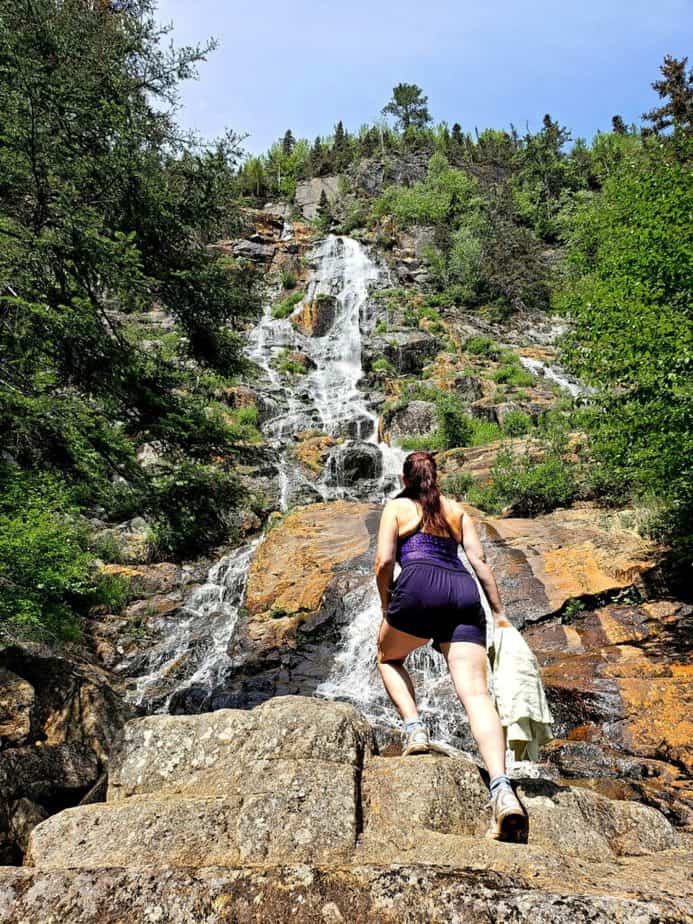
Hiking into Unfamiliar Terrain – How To Keep Your Bearings?
1. Prepare
Being prepared will go a long way for your mental well-being during a hike. Prepared hikers are confident, safe, secure, and much more apt to keep their bearings in new terrain.
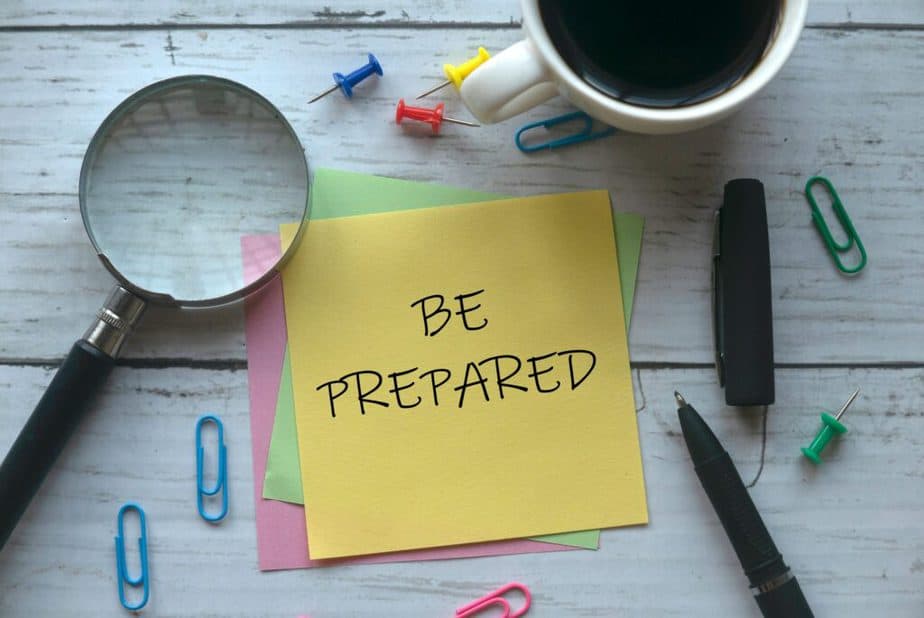
2. Maps
Before your hike, bring at least one paper map and one downloaded digital map.
Ensure that these maps fully encompass the region you will be exploring.
It’s even better if the maps extend with a radius of at least one mile outward beyond what you’ll need. If you manage to travel a little further than expected, you can still have a good chance of finding yourself and getting out safely.
Before you leave for your hike, take some time to study both maps. Try to create a mental photo of what your exploration will look like. Pay attention to the topography, any nearby trails, bodies of water, and the type of terrain (forest, mountains, swamps, etc.).
Keep your paper map in a dry location, laminate it, or tuck it away in a sheet protector or plastic ziplock bag. Store your compass near your paper map for added safety.
Take the time to fully charge the device that you will use your digital map within, and keep tabs on the battery’s charge throughout your hiking trip. Make sure that this map is downloaded and functional, even without any cell signal.

3. Basic Packing Items
Pack enough food, water, and clothing for the duration of your trip.
An appropriate amount of water is two cups per hour you expect to be gone. Drink four cups of water right before embarking on your hiking trip for added hydration.
An appropriate amount of food is about 2 pounds per person per day, give or take a half-pound depending on their metabolism and eating habits. That is equivalent to 3,500 calories, plus or minus 1,000 calories each way.
On top of food and water, be sure to pack additional clothing, along with an appropriately sized first aid kit.
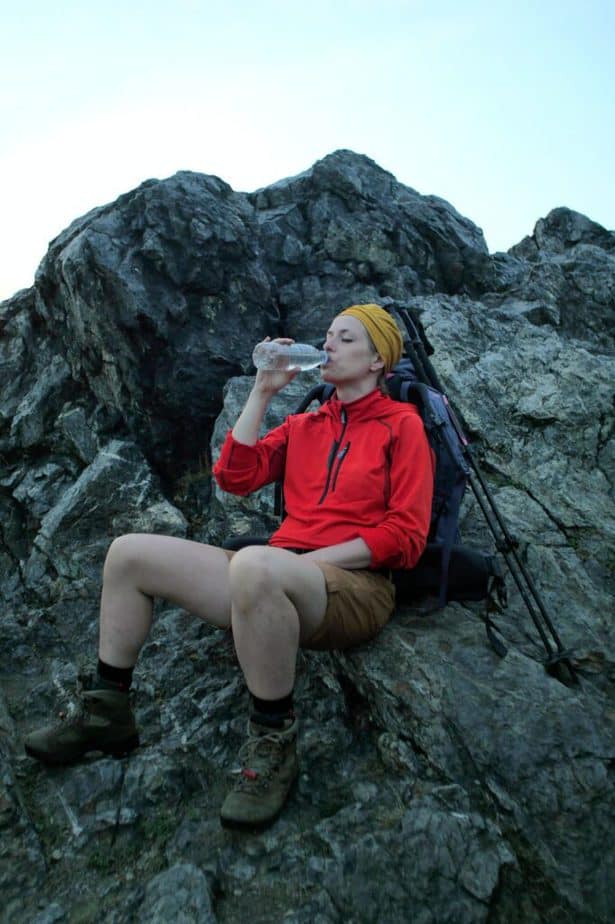
4. Protection
Research the region you’ll be hiking. If other humans and aggressive dogs are your only threats, pepper spray should suffice.
Wilder regions may require more powerful means of protection, such as bear spray or a handgun.
If you take bear spray, do a test spray with your canister to see what the spread will look like, what the kickback will feel like, and ensure that it is filled and in proper working condition. Always spray bear spray with the wind blowing at your back, never toward your face.
If you take a pistol out on your hike, be sure to familiarize yourself with it first thoroughly.
Having a weapon but not knowing how to use it in various situations will render it and you completely helpless. Learn how to load and reload it, turn the safety on and off, how to fire it, how to fix a jam, and how to take it apart, clean it, and reassemble the gun. You need to be familiar and confident with any weapon.

5. Attire
Note the season, weather, terrain type, footing, and elevation of your hike, and dress accordingly.
Dress in layers, have a protective water-resistant shell, and wear shoes that fit you well, will stay dry, and won’t cause any pain or blistering.
Don’t forget about your hiking pack; make sure that it fits you properly, rides on your back comfortably, and do your best to pack it as lightly as you can.
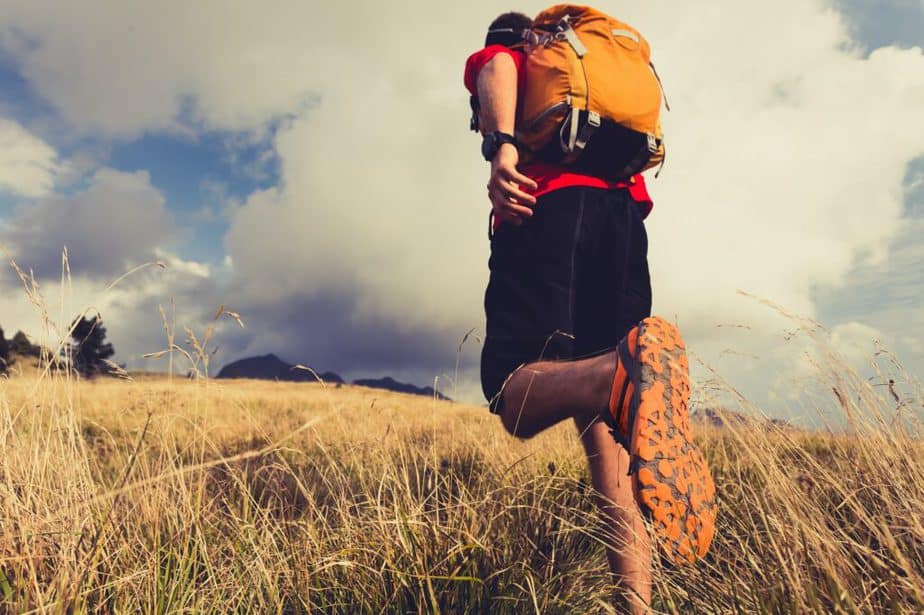
6. Speak to Knowledgeable Hikers
Before your hike, talk to someone already familiar with the area.
Their insight can be constructive in navigating your way through the area and also in calming your nerves.
They can tell you that the creek shown on your map is actually dry this time of the year, how much snow to expect at your elevation, and what kinds of wildlife you’re likely to encounter.
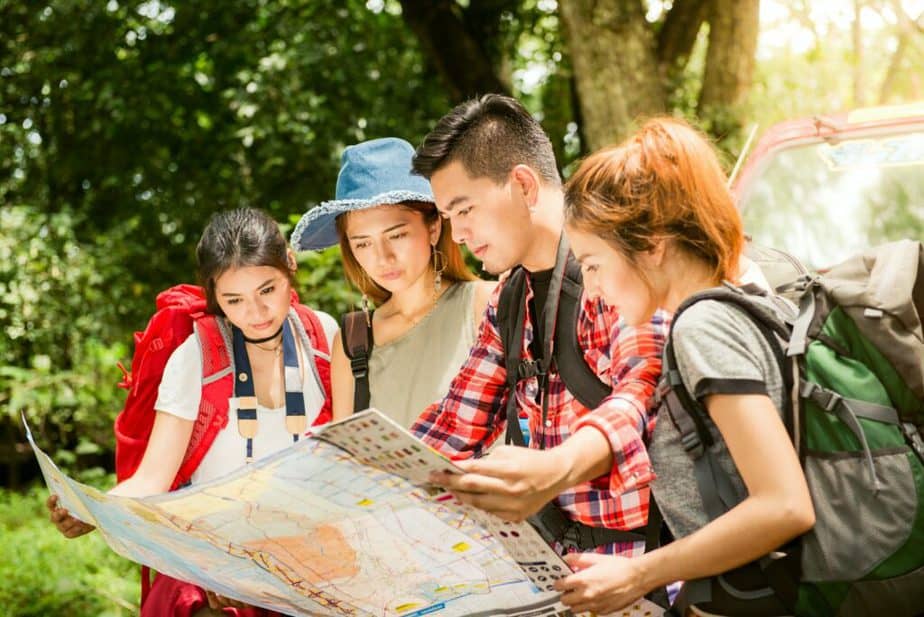
7. Tell a Friend Where You’ll Be
Tell a friend or family member about your upcoming hike, how long you’ll be gone, and in which region you’ll be exploring.
If you have specific trails you’ll be taking, include those too. It’s even better if you can specify what time you’ll start on each path and the order you’ll be taking them in.
One tip I always share with new hikers is to write down or text all this information to your friend or family member. Their memory may be good, but having a written plan can ease their anxiety and yours.
Of course, call or text your friend or family member before and after your hike, so they know if you’re sticking to schedule and that you’re safe when it’s over.

8. Bring a Companion
If you can take a friend who is familiar with the area, that is your best option.
Bringing along an experienced hiker, even if they aren’t familiar with the area, is an excellent second option.
Bringing along a positive, energetic, and somewhat athletic friend, human or animal, is your third-best option. They can keep your spirit up and your wits about you as you explore this new region.
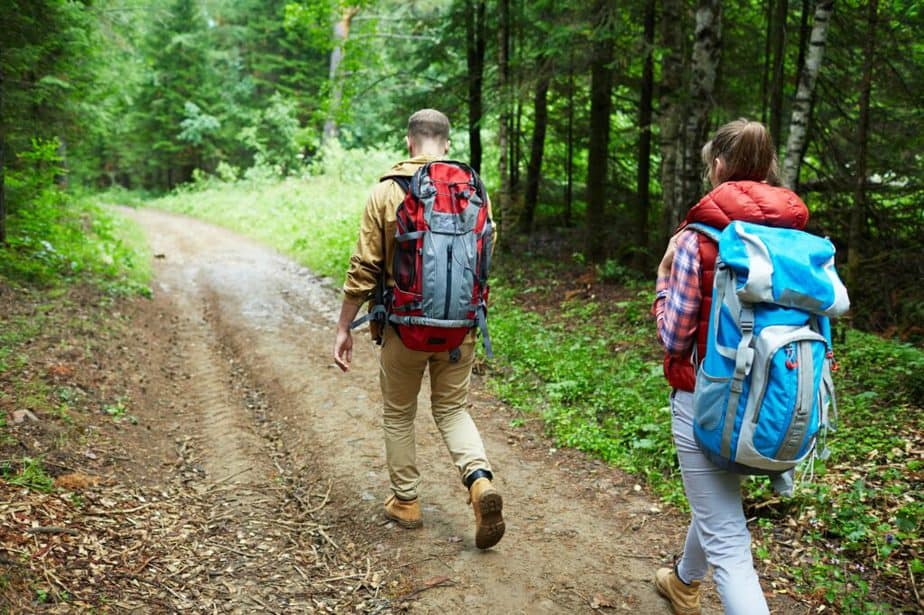
On the Trail
While on the trail, there are a few actions you can take to keep you safe.
1. Take Several Photos
Take photos of notable landmarks, signs, and roads you may encounter. If you get lost, these photos become excellent reference points that will be largely beneficial in backtracking your way to safety.
After your hike, these photos are always lovely to reflect on and perhaps be used to plan your next trip.
2. Use Positive Self Talk
Remind yourself about how diligently you planned this hike.
Remind yourself that you have good instincts. You can trust your gut to keep you safe.
Remind yourself of all the other difficult obstacles you’ve overcome so far in your life.
3. Be a Mindful Hiker
Smell the fresh outdoor air, make an effort to appreciate it truly.
Listen to your environment, such as the way the leaves rustle in the trees, how a far-off stream trickles and gurgles, and how the birds flutter and chirp around you.
Pay attention to the way your feet hit the ground as you make your steps.
Feel the way your knees bend and straighten.
Notice how your ankles lightly twist, rock, and adjust to carry you over uneven ground.
Be aware of how your muscles feel when they contract and relax.
This exercise won’t leave space for intrusive or unsettling thoughts to enter your mind. It will also improve your body’s self-awareness and balance.
Don’t forget to look up and around, noting your surroundings and checking for nearby people and animals. Take in the beautiful scenery while you’re at it.
4. Mind Your Instincts
If you feel uneasy about a trail, think that you’re being watched, or don’t want to finish the hike, it is entirely okay to turn back and cut your trip short. Your instincts are good, and you should listen to what they’re telling you.
Hiking is all about enjoyment, and if you’re not enjoying yourself, it is perfectly okay and valid to turn around and try again another day.
Frequently Asked Questions About Hiking Into Unfamiliar Terrain
How Else Can I Research an Area Before Hiking?
To research an area before hiking research on Google, hiking apps, and experienced friends, you can also check out social media hashtags, YouTube videos, and Facebook Groups. Social media is now a great way to gather information on an area before trekking into it yourself for the first time.
Do I Need to Pack Everything Out?
While it may seem obvious that you need to pack out the non-biodegradable waste, you may create, such as food wrappers, water bottles, or dirtied clothes. Not everyone understands this. Always pack out absolutely everything you bring into the forest. That also includes food scraps, paper tissues, chewing gum, and even used toilet paper. Carrying a wet sack for your more unhygienic waste is a useful hack.
Do I Need to Pack Out Banana Peel?
It is correct that banana peel will eventually compost. However it can take up to two years. In the meantime, a wild animal is likely to forage this food, teaching them to turn to humans for food, or causing them digestion issues as bananas and orange peels are typically not within their regular diet.
Conclusion About Hiking Into Unfamiliar Terrain
Hiking is a fantastic time to get out and explore nature, reflect, get healthy, and become a better, happier person. But, hiking in new areas can be unnerving.
To keep your bearings, always remember to do your research, prepare, pack intelligently, and be mindful. At the same time, communicate with others, bring a friend if possible, follow your instinct, and enjoy yourself whenever possible.
Happy trails!
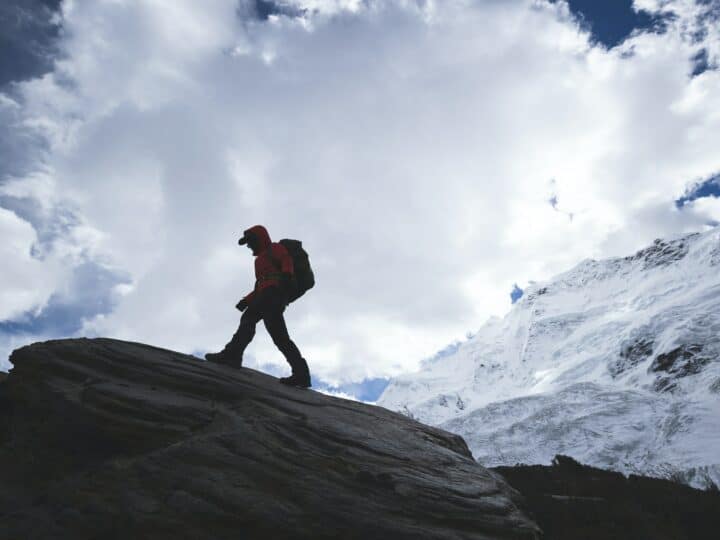

sex
Tuesday 27th of August 2024
Thank you very much for sharing, I learned a lot from your article. Very cool. Thanks.
rrinimabi
Monday 19th of August 2024
Thank you very much for sharing, I learned a lot from your article. Very cool. Thanks.
nimabi
Wednesday 29th of November 2023
Thank you very much for sharing, I learned a lot from your article. Very cool. Thanks. nimabi
20bet
Friday 15th of September 2023
Your article gave me a lot of inspiration, I hope you can explain your point of view in more detail, because I have some doubts, thank you.
pi network 価格予想
Sunday 18th of June 2023
Reading your article helped me a lot and I agree with you. But I still have some doubts, can you clarify for me? I'll keep an eye out for your answers.